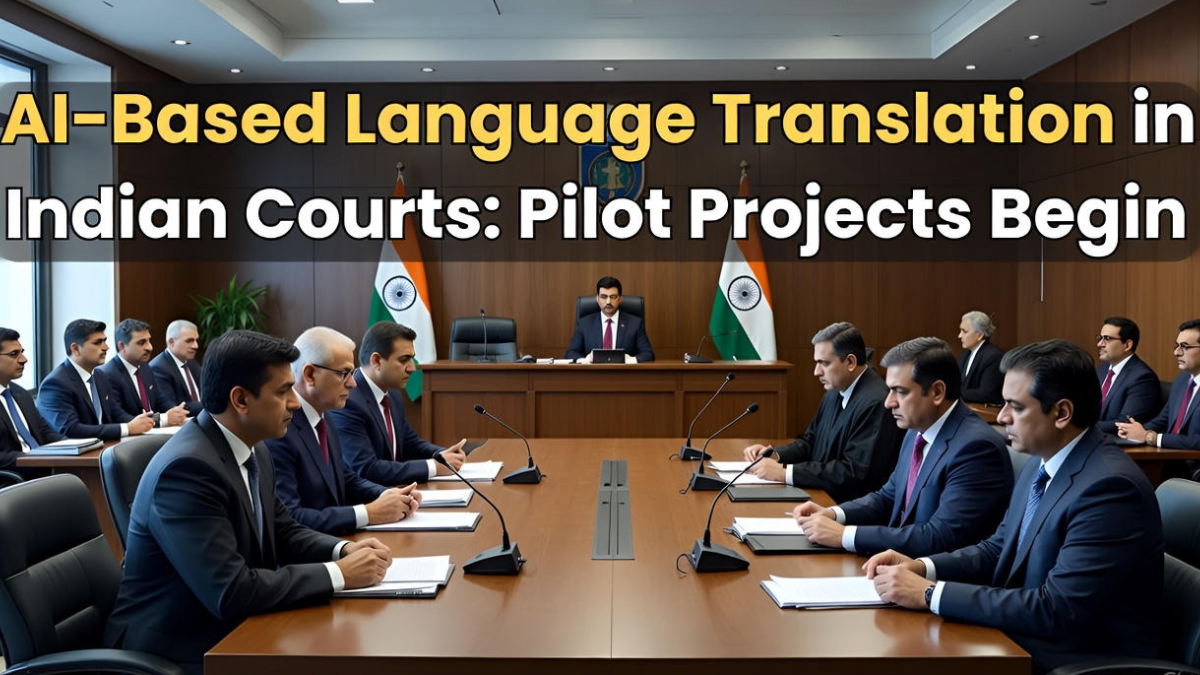The introduction of ai court translation india marks a transformative moment for the country’s judicial system. For decades, Indian courts have struggled with delays caused by language barriers, manual translation, and lack of real-time linguistic support. As courtrooms handle cases in multiple regional languages, ensuring accurate and timely translation has been a constant challenge. Today, artificial intelligence is stepping in to bridge this gap. With the arrival of new legal tech updates, courts are beginning pilot programs that use AI-based translation tools to speed up proceedings, reduce misunderstandings, and improve access to justice. This shift represents a historic step toward a faster, more efficient legal ecosystem.

Why AI Translation Is Needed in Indian Courts
India’s legal system operates in dozens of languages, with litigants, lawyers, and judges often speaking different regional tongues. This creates delays in hearings, misinterpretations, and dependency on human translators. The rise of ai court translation india aims to eliminate these barriers by using machine learning models that can instantly interpret and translate spoken or written text.
Recent legal tech updates highlight the growing need for digital transformation in courts. As case backlogs continue to rise, AI-based tools offer a practical solution to speed up documentation, reduce workload, and ensure linguistic accuracy. This is especially important for rural and regional courts where translation services are limited.
How the AI Court Translation Pilot Programs Work
Under the ai court translation india initiative, select courts are now using AI models to translate case summaries, petitions, orders, and spoken statements in real time. These tools rely on advanced NLP (Natural Language Processing) systems trained on Indian legal terminology, regional dialects, and official court formats.
The latest legal tech updates show that AI tools can interpret languages such as Hindi, Tamil, Bengali, Marathi, Telugu, Punjabi, and more, offering seamless multilingual support. Courtrooms use microphones, digital displays, and translation dashboards to show parallel translated text instantly. Judges and lawyers can view the translations simultaneously, reducing confusion and saving valuable court time.
Table: Manual Translation vs AI-Based Translation in Courts
| Feature | Manual Translation | AI-Based Translation |
|---|---|---|
| Speed | Slow, time-consuming | Instant, real-time |
| Accuracy | Human-dependent | Consistent with trained data |
| Role in legal tech updates | Limited | Major innovation |
| Cost | Higher due to manpower | Lower operational cost |
| Scalability | Difficult | Easy to deploy nationwide |
This comparison highlights why ai court translation india is expected to bring substantial improvements to case handling.
Benefits for Judges, Lawyers, and Litigants
The rollout of ai court translation india offers major advantages across the judicial ecosystem. Judges can now access documents in their preferred language without waiting for manual translations. This speeds up hearing schedules and reduces delays in delivering justice.
For lawyers, AI helps improve clarity during arguments and ensures that no crucial point is lost due to language differences. The accuracy and speed of AI translation also help legal teams prepare cases faster.
Litigants benefit significantly as well. Many citizens struggle to understand legal proceedings conducted in languages different from their own. With legal tech updates, translated documents and court statements become accessible, improving transparency and fairness in the judicial system.
Impact on India’s Legal Modernization
The introduction of ai court translation india aligns with India’s broader goal of digital modernization across sectors. Courts are increasingly adopting virtual hearings, e-filing systems, digital documentation, and AI-based research tools. Language translation is the next crucial step in making justice more accessible and efficient.
These legal tech updates will eventually support nationwide case digitization and help create a uniform interpretation system. AI-driven translation can also assist in training new judges, supporting legal education, and organizing multilingual court databases.
Challenges in AI Translation for Legal Use
Despite its promise, ai court translation india faces several challenges. Legal language is complex, filled with specific terminology that AI must interpret accurately to avoid misunderstandings. Training AI models requires thousands of documents across multiple languages, which is time-consuming.
Additionally, courts must implement strict security measures to ensure that translations do not compromise confidentiality. Other challenges include adapting to regional dialects, ensuring system reliability, and training court staff to use new translation tools. These issues are being addressed gradually through ongoing legal tech updates and technical improvements.
Conclusion
The implementation of ai court translation india represents a groundbreaking step toward building a more efficient and equitable judicial system. By leveraging advanced AI tools and integrating them with recent legal tech updates, India is modernizing its courts, reducing case delays, and improving linguistic accessibility for millions. As pilot programs expand and the technology becomes more refined, AI-driven translation will play a central role in shaping the future of justice delivery in India.
FAQs
How does AI translation help Indian courts?
AI offers real-time, accurate translations that reduce delays and improve communication in multilingual courtrooms.
Why is ai court translation india important?
It helps solve language-related challenges and speeds up legal processes across diverse regions.
Are AI translations accurate enough for legal use?
Yes, accuracy is improving rapidly with ongoing legal tech updates, though human oversight is still required.
Will AI translation replace human translators completely?
Not immediately, but it will significantly reduce dependency on manual translation while improving court efficiency.
Click here to know more.